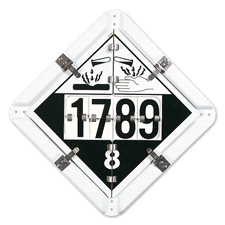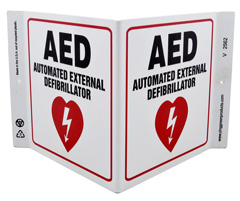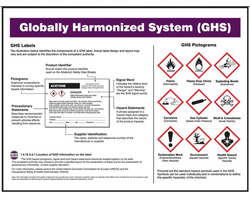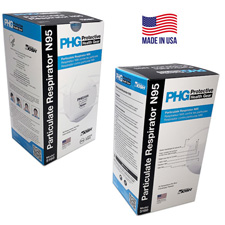| The Home page of ILPI's Safety Data Sheet (SDS) Resource, the leader in SDS information since 1995! | |
| The history and philosophy behind this resource. | |
| A curated collection of books and reference materials concerning Safety Data Sheets and closely related topics. | |
| Paste your plain text SDS into the SDS-Demystifier, and it will be converted into a hypertext-enriched document with links to detailed explanations of each key term. | |
| An extensive list of frequently asked questions about Safety Data Sheets including regulations, content, compliance, and more. | |
| A humorous take on Safety Data Sheet jargon. Fill in the blanks on our entry form to generate a personalized Unsafety Data Sheet to share with your coworkers. | |
| Since 1995, we've maintained this massive curated list of the best places to find Safety Data Sheets on the Internet. | |
| Way more than a glossary, this hypertext-enhanced resource covers hundreds of SDS-related terms and expert knowledge. Each entry includes both the SDS relevance and links to additional authoritative resources. | |
| Archived results of Safety Data Sheet related polls taken by some of our millions of site visitors | |
| You are here! The OSHA regulations behind SDS regulations, including the inspection guidelines and over 400 official interpretations letters under the Hazard Communication Standard | |
| Commercial suppliers of SDS authoring and management software as well as cloud compliance services. | |
| Commercial companies that will create SDS's for your specific needs as well as SDS translation companies. |

Safety signs, banners, and scoreboards? Get yours at Safety Emporium!
| Title: 09/18/2018 - Hazard Communication Standard - SDS responsible party and hazards not otherwise classified | |
| Record Type: Interpretation | Standard Number: 1910.1200, 1910.1200(f)(6), 1910.1200(g)(2)(ii), 1910.1200 App C, 1910.1200 App D |
OSHA requirements are set by statute, standards and regulations. Our interpretation letters explain these requirements and how they apply to particular circumstances, but they cannot create additional employer obligations. This letter constitutes OSHA's interpretation of the requirements discussed. Note that our enforcement guidance may be affected by changes to OSHA rules. Also, from time to time we update our guidance in response to new information. To keep apprised of such developments, you can consult OSHA's website at https://www.osha.gov.
September 18, 2018
Messrs. Nick Stone and Kirk Nelson
Authoring Services Department
MSDSonline - A Velocity EHS Solution
222 Merchandise Mart Plaza, Suite 1750
Chicago, Illinois 60654
Dear Messrs. Stone and Nelson:
Thank you for your letter to the Occupational Safety and Health Administration 's (OSHA) Directorate of Enforcement Programs. Your letter requested clarification on the required contact information on safety data sheets (SDSs) for imported products. You also asked if importers may create a hybrid SDS and label, meeting both OSHA 's revised Hazard Communication standard (HCS 2012) at 29 CFR 1910.1200 and Canada 's revised Hazardous Products Regulations (HPR) with its modified Workplace Hazardous Materials Information System (WHMIS 2015). We apologize for the delay in our response. This letter constitutes OSHA 's interpretation only of the requirements discussed and may not be applicable to issues not delineated within your original correspondence. Your paraphrased questions and our responses are below.

Get your GHS-compliant labels and signs from Safety Emporium.
Question 1: Is it permissible to list a foreign address in Section 1 of the SDS as the responsible party or must a U.S. address and phone number always be listed on the SDS to be considered compliant? Is it ever permissible to use a foreign phone number (non-emergency) for the responsible party? Can the emergency phone number in Section 1 of the SDS be a foreign number, as long as the person answering it can speak English and is competent?
Response: No. Section 1 of the SDS must include the name, address, and telephone number of the manufacturer, importer, or other responsible party. Section 1 must also include an emergency phone number. The address must be in the United States, and the phone number must be a domestic number. If a manufacturer, importer, distributor, or employer chooses to add a foreign address (non-U.S. based) to an SDS, it may be listed in Section 1 if the responsible party believes they may be able to provide additional supplemental information and is done in a fashion that does not cause confusion. To avoid confusion, the supplemental information may, instead, be provided in Section 16 of the SDS. (See also, OSHA Instruction CPL 02-02-079, Inspection Procedures for the Hazard Communication Standard (HCS 2012), July 9, 2015, specifically, Section X.G.1.o).
Question 2: If a chemical is imported from a foreign supplier by a U.S. company for use in its own workplace only (the material/product will not be leaving the facility it was imported into, and will be fully consumed on site), is the U.S. importer now considered the responsible party?
Response: Yes. The first U.S. company (importer/distributor) to receive the shipment from the foreign supplier is now the responsible party for that chemical.
Question 3: If the answer to question 2 above is yes, then is the U.S. importer now liable for all HCS 2012 requirements for that chemical, including classification and developing an SDS as soon as it is in their possession?
Response: Yes. The importer assumes the responsibility to ensure it is compliant with OSHA 's HCS, including classifying the chemical and developing or obtaining an SDS. If the chemical will not be leaving the facility, the U.S. importer may follow the workplace labeling requirements at 29 CFR 1910.1200(f)(6).

We've got your DOT number at Safety Emporium with DOT placards, NFPA labels and more!
Question 4: If the U.S. importer does not receive an HCS-compliant SDS with the foreign shipment, is it obligated to author one? If so, is it allowed to use the foreign manufacturer 's address in Section 1 of the SDS if its own address is present?
Response: The importer is the responsible party, and if it does not receive an SDS from the foreign supplier meeting the requirements of HCS 2012, then it is required to create an HCS-compliant SDS. The SDS must have the importer 's U.S. address, but may contain a foreign manufacturer 's address in Section 1, as well. To avoid confusion, the foreign manufacturer 's address may, instead, be provided in Section 16 of the SDS. (See also, OSHA Instruction CPL 02-02-079, Inspection Procedures for the Hazard Communication Standard (HCS 2012), July 9, 2015, specifically, Section X.G.1.o).
Question 5: If the importer received an HCS 2012-compliant SDS from its overseas distributor, is it allowed to use that SDS in its own workplace?
Response: Yes. Please see our response to question 3, above.
Question 6: If the foreign distributor provides an SDS with its own (foreign) address in Section 1, is the U.S. importer allowed to use that address as the responsible party, or is it required to put its own company name/address on the SDS as the responsible party and take full responsibility for the content of the SDS?
Response: When chemicals are imported into the United States, the person (meaning one or more individuals, partnerships, associations, corporations, business trusts, legal representatives, or any organized group of persons) who imported the product automatically becomes the responsible party. (See also, OSHA Instruction CPL 02-02-079, Inspection Procedures for the Hazard Communication Standard (HCS 2012), July 9, 2015, specifically, Section X.C.15.a). Also, please see our responses to questions 1, 2, and 3, above.
Question 7: Health Canada's WHMIS 2015 contains a provision that does not require a Canadian importer to have its own Canadian address on a WHMIS 2015-compliant SDS, as long as the chemical is being fully consumed on site. Is the U.S. looking to adopt something similar?
Response: Although Health Canada 's WHMIS 2015 regulation does not require an importer to include its address on its SDS for chemicals to be used on site, OSHA 's HCS 2012 requires that all SDSs must include a U.S. address in Section 1 of the SDS. OSHA does not currently plan to change this requirement.

Safety Emporium carries all kinds of eye/face washes, safety showers, drench hoses and more.
Question 8: Please clarify what constitutes “a company contracted to provide more information,” as referenced in OSHA CPL 02-02-079 Section X.C.19, which states: “Responsible party means someone who can provide additional information on the hazardous chemical and appropriate emergency procedures, if necessary. This could be the manufacturer or importer or a company contracted to provide more information. The name and address of the responsible party MUST be the same on the SDS and the label.”
Response: A contracted company that provides additional information for a hazardous chemical may be an SDS author or contracted preparer, such as an online SDS service. In this arrangement, a manufacturer or importer may agree to list the contracted company on its chemical label and SDS as the party to be contacted to provide additional or emergency information. However, the manufacturer or importer remains as the responsible party and, as such, maintains the ultimate responsibility for compliance with OSHA 's HCS.
Question 9: Is this contracted company allowed to claim full responsibility for the SDS and its contents, and be the responsible party in Section 1 of the SDS?
Response: No. Please see our response to question 8, above.
Question 10: Does the responsible party need to be based in the U.S. (address/phone number)?
Response: Yes. See our responses to questions 1, 2, and 6, above.
Question 11: Does the HCS require the emergency number on the SDS to be U.S. based, or is the requirement just to be able to provide information in case of an emergency?
Response: Yes. The emergency telephone number must be U.S. based.

Get your AED and other wall-projecting safety signs from Safety Emporium.
Question 12: Is it acceptable to have a “hybrid” SDS and/or “hybrid” label that contains both required elements according to OSHA 's HCS and Health Canada?
Response: Yes. “Hybrid” labels and SDSs must be compliant with all elements of OSHA 's HCS, and any additional supplemental information (e.g., foreign country information) that is included must not contradict the required information of OSHA 's HCS.
Question 13: Is it acceptable if the hazard and precautionary statements in Canada 's Hazardous Products Regulations (HPR) are used on an SDS/label, in lieu of the statements in OSHA HCS (Appendix C), if they offer the same amount of protection?
Response: It is the responsibility of the chemical manufacturer or importer to review available information to properly classify the hazardous chemical and determine the appropriate hazard and precautionary statements that must be included on the label and SDS. See 29 CFR 1910.1200(b)(1). As stated in OSHA CPL 02-02-079, a responsible party may follow the most recent version of the Globally Harmonized System of Classification and Labelling of Chemicals (GHS) as long as the hazard information does not contradict or cast doubt on HCS 2012 required information. If the HPR hazard and precautionary statements differ from the HCS 2012 statements because they were adopted from a more recent revision of the GHS, the responsible party may use them, as long as the hazard information does not cast doubt on the HCS 2012 required information. For an example of minor differences that are acceptable, see OSHA's letter to Mr. Joe McCarthy, dated November 29, 2017.
However, as explained in the OSHA CPL 02-02-079, classification or hazard categories may be different in a more recent version of GHS than in HCS 2012. In those cases, it is not permissible to use the hazard and precautionary statements from the more recent revision of the GHS because it would contradict or cast doubt on required information.

Ensure your workers are trained with safety posters and more from Safety Emporium.
Question 14: Is it acceptable to include HHNOC (Health Hazards Not Otherwise Classified) classifications, PHNOC (physical hazards not otherwise classified) classifications, and label elements (pictograms, signal words, hazard statements, and precautionary statements) from the Canada HPR on a “hybrid” SDS and label that contains U.S. and Canada-required elements (as mentioned above)? If this is not acceptable by OSHA, would it be acceptable to include a disclaimer to the effect below on the “hybrid” SDS and label, while still including the labeling elements:
“This document includes HHNOC (Health Hazards Not Otherwise Classified), and/or PHNOC (Physical Hazards Not Otherwise Classified) classifications and labeling elements (pictograms, hazard statements, and precautionary statements) that only pertain to Canada's HPR. These classifications and labeling elements do not apply to U.S. OSHA 's HCS (29 CFR 1910.1200).”
Response: HCS 2012 requires HNOCs to be included on the SDS, see 29 CFR 1910.1200(g)(2)(ii) and HNOCs may be included on the label as supplemental information. OSHA allows supplemental language to appear on the label when it does not contradict or cast doubt on the validity of the standardized hazard information. See 29 CFR 1910.1200, Appendix C, C.3.1. Additionally, OSHA permits the use of the exclamation mark pictogram to indicate the hazards of an HNOC on the label and SDS if the label also indicates that the pictogram is being used for a hazard not otherwise classified (e.g., the words “Hazard Not Otherwise Classified” or “HNOC” appear below the exclamation mark pictogram). However, the exclamation mark pictogram may only appear once on a label; if it already appears as a required pictogram for a classified hazard, it may not appear a second time as supplemental information for the HNOC.
Question 15: Is it acceptable to include in Section 3 of the SDS on a “hybrid” document with U.S. and Canada-required elements, the GHS hazard classifications for each component in a product (mixture or substance) alongside required component information? In particular, is it compliant to include HHNOC and/or PHNOC classifications for each component in this part? Should a disclaimer similar to that mentioned above be included, or should component classifications in Section 3 of the SDS be omitted when an HHNOC or PHNOC component is present in the composition?
Response: Yes. The information required on an SDS under the HCS 2012 in Table D.1 of Appendix D is the minimum information required. OSHA would allow additional information on the SDS as long as it does not contradict or cast doubt on the required information.

Get your PPE such as made in USA NIOSH-approved N95 masks from Safety Emporium.
Question 16: The Canadian HPR and Canadian Technical Guidance on the Requirements for the Hazardous Product Act require the use of precautionary statements for the hazard classes not covered by the GHS. They define these hazard classes as combustible dusts, simple asphyxiants, pyrophoric gases, PHNOC, HHNOC, and biohazardous infectious materials. On a “hybrid” SDS and label that contains U.S. and Canada elements (minus biohazardous infectious materials) as mentioned above, would it be acceptable to add precautionary statements for the hazard classes not covered by GHS?
Although OSHA does not require precautionary statements for HNOCs, it will permit them as supplemental information as long as the statement does not contradict or cast doubt on the required information. HCS 2012 requires hazard statements for combustible dust, pyrophoric gas, and simple asphyxiants, but does not require precautionary statements for those hazards. OSHA will allow precautionary statements for these hazards provided they do not contradict or cast doubt on the required information.
Thank you for your interest in occupational safety and health. We hope you find this information helpful. OSHA's requirements are set by statute, standards, and regulations. Our letters of interpretation do not create new or additional requirements but rather explain these requirements and how they apply to particular circumstances. This letter constitutes OSHA's interpretation of the requirements discussed. From time to time, letters are affected when the Agency updates a standard, a legal decision impacts a standard, or changes in technology affect the interpretation. To assure that you are using the correct information and guidance, please consult OSHA's website at www.osha.gov. If you have any further questions, please feel free to contact the Office of Health Enforcement at (202) 693-2190.
Sincerely,
Amanda Edens, Acting Director
Directorate of Enforcement Programs
The original official public domain version of this document is available from OSHA at https://www.osha.gov/laws-regs/standardinterpretations/2018-09-18.